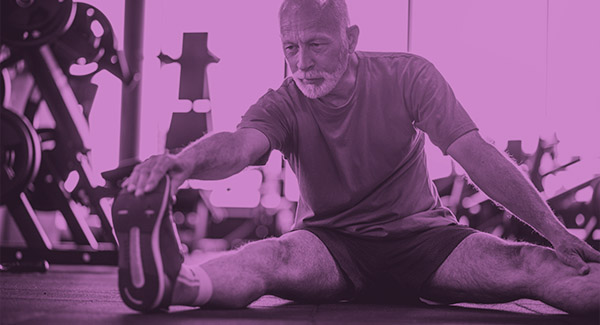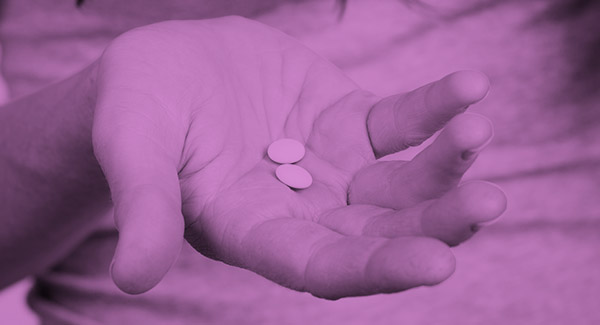Osteoporosis
Osteoporosis can cause bones to become brittle and weak, putting a person a risk of fracture.
Bones, made up of calcium and other minerals, are constantly being broken down and rebuilt. In people with osteoporosis, bone tissue breaks down faster than it is replaced. The bones become less dense (thinner) and brittle and are more likely to break (fracture) with pressure or after a fall. Bone loss happens without any warning signs. Therefore, osteoporosis is called a “silent disease.” Osteoporosis is different from osteoarthritis, a form of arthritis in which joint cartilage, the rubbery material that covers the ends of bones, wears away.
Bone tissue is replaced regularly in a process called bone remodeling or bone turnover. From childhood into young adulthood, the body produces more than enough cells to replace those that die, resulting in stronger, denser bones. By age 25, bones are at peak bone mass and cell turnover remains relatively stable for several years. At about age 40, bone cells start to die at a more rapid rate than new cells are produced. This starts a slow decline in bone mass and may lead to the development of osteoporosis.
During and after menopause, when estrogen (hormone) levels drop, women lose bone mass faster. About five to 10 years after menopause starts, women can lose up to one-third of their bone mass. Men also lose bone mass as they age, but women tend to lose it faster.
Any bone in the body can be affected by osteoporosis. However, the spine, hips, ribs and wrists are the most commonly fractured when a person with osteoporosis falls. Osteoporosis can also cause a hump in the upper back or loss of height.
According to the NIH, more than 53 million people in the United States either already have osteoporosis or are at high risk due to osteopenia, or low bone mass density. Each year, osteoporosis contributes to more than 1.5 million fractures of the back/spine, wrists and hips. Osteoporosis is more common in women. It is the main cause of bone fractures in post-menopausal women and the elderly. However, men can also get osteoporosis.
Causes of Osteoporosis
The amount of bone mass a person has as a young adult, and the rate at which it is lost with aging, determines one's risk for osteoporosis. In addition to age, gender, family history, certain medical conditions and procedures, lifestyle habits and medication use also play a role.
Osteoporosis is more common in:
- Women, especially those who are past menopause or who are elderly.
- Women who go through menopause before age 45 or who have irregular or missed menstrual periods.
- Women who have had their ovaries removed through a hysterectomy.
- Women who don’t exercise regularly or who exercise so much that menstrual periods stop.
- Men with low levels of testosterone.
- Individuals who are thin or have small body frames.
- Individuals with a family history of osteoporosis, or who are of Caucasian or Asian ancestry.
- Individuals with a history of bone fractures after a minor injury.
- Individuals with an inflammatory form of arthritis, such as rheumatoid arthritis, psoriatic arthritis, lupus, ankylosing spondylitis or reactive arthritis.
- Individuals who take drugs that reduce bone mineral density such as corticosteroids (cortisone, prednisone or methylprednisolone), anticonvulsants (anti-seizure medications), a class of antidepressants known as selective serotonin reuptake inhibitors (SSRIs) or heparin, a blood thinner.
- Individuals with celiac disease (allergy to gluten), inflammatory bowel disease (IBD), hyperthyroidism, chronic obstructive pulmonary disease (COPD), multiple myeloma (bone marrow cancer), thyroid or parathyroid disease.
- Individuals who have had bariatric surgery
- Individuals who smoke or drink three or more alcoholic beverages a day
- Individuals with a history of anorexia nervosa or other eating disorders
- Individuals who have had long periods of immobility or bed rest
People who have one or more of these risk factors should talk to a doctor about ways to reduce the risk of osteoporosis and whether a bone density test is needed.
Symptoms of Osteoporosis
Osteoporosis is a silent disease that causes few outward signs or symptoms. Because osteoporosis develops over the years, a person may not be aware they have it until there is a broken bone, loss of height, or noticeable hump in the upper back.
Other symptoms of osteoporosis are:
- Tooth loss. This may be a sign that osteoporosis has affected the jawbone.
- Back pain. A fracture or a collapsed vertebra in the spine may mean you have developed spinal osteoporosis.
Diagnosis of Osteoporsis
Osteoporosis develops slowly over the years. Symptoms such as tooth loss or back pain may be mistakenly attributed to something else. Anyone who has a family history of osteoporosis or risk factors for the disease should discuss their chances of getting it with a doctor. Some doctors have special training and experience that helps them diagnose and treat people with osteoporosis. These doctors include rheumatologists, endocrinologists and orthopedic surgeons. Some general internists, radiologists and specialists in women’s health may also have special training in osteoporosis.
The doctor will make a diagnosis of osteoporosis by considering several factors, including:
- Health history and physical -- The doctor will perform a physical examination and ask questions about the patient's personal and family medical history, medications, diet and fracture history.
- Blood and urine tests. These tests help to rule out other diseases that weaken bones.
- Bone density scan -- Bone-density measurement is quick and painless. The most accurate test is called a dual-energy X-ray absorptiometry (DEXA) scan. It can measure as little as 1 percent to 2 percent loss of bone density. The DEXA scan also is used to track changes in bone density over time and with treatment. Computerized tomographic (CT) scans also can measure bone density. Bone X-rays are useful for finding fractured bones, but are not accurate in determining bone density. X-rays cannot detect bone loss until there is a decrease of more than 30 percent.
The United States Preventive Services Task Force recommends an initial bone density test at age 65, or age 60 if you are taking corticosteroids. People with rheumatoid arthritis should have a baseline bone density test when diagnosed with that condition.
Bone-density tests should be also done for:
- Women as early as age 50 if they have a high risk for osteoporosis
- Individuals who are taking, or have taken, long-term corticosteroids or expect to do so
- Individuals with a personal history or family history of fractures
- Individuals who have diseases that affect calcium absorption or bone strength
Treatment of Osteoporsis
Treatment for osteoporosis involves slowing the rate of bone lose or increasing the rate of bone formation. There are two types of medications for this.
- Drugs that slow the rate of bone loss are called antiresorptive medications.
- Drugs that increase the rate of bone formation are called anabolic medications.
Until somewhat recently, estrogen hormone replacement therapy (HRT) was the traditional way to prevent osteoporosis as well as treat menopausal symptoms. However, recent evidence suggests estrogen can increase the risk of breast cancer, stroke and heart attack. Because of this, estrogen supplementation after menopause is usually not used to prevent osteoporosis.
Antiresorptive Medications include:
Bisphosphonates.
These are the most common treatment for osteoporosis. They can stop bone loss and reduce the risk of fractures by up to 50 percent. Bisphosphonates include alendronate (Binosto, Fosamax), ibandronate (Boniva), risedronate (Actonel) and zoledronic acid (Reclast).
Denosumab.
A type of drug called a biologic, denosumab (Prolia) is injected under the skin every six months at a doctor’s office.
Calcitonin.
This is a naturally occurring hormone that decreases bone breakdown. It is FDA-approved for osteoporosis treatment but not prevention. Calcitonin controls bone breakdown and may ease pain in people with spine fractures. It’s available as a nasal spray or an injection (Miacalcin, Fortical).
Selective estrogen receptor modulators (SERMs).
These drugs work like estrogen, but with fewer side effects. Raloxifene (Evista) is an FDA-approved SERM for the treatment and prevention of postmenopausal osteoporosis. In 2013, the FDA approved Duavee, a combination product containing the SERM bazedoxifene and conjugated estrogens for menopausal symptoms and osteoporosis.
Anabolic Medications include:
Teriparatide. Teriparatide (Forteo) is an anabolic medicine approved to treat men and postmenopausal women who have severe osteoporosis with a high risk of fractures. The man-made parathyroid hormone has been shown to stimulate new bone formation, decrease the risk of spinal fractures and improve bone density. It is given as a daily injection for up to two years.
Self Care
Self Care
Taking a proactive part in osteoporosis treatment is important. Getting more exercise, eating a balanced diet rich in calcium and vitamin D and reducing unhealthy habits like smoking or excessive drinking will help to maintain bone health.
Don’t smoke.
People who smoke have a greater risk of fracture than nonsmokers and take a longer time to heal. Women who smoke often produce less estrogen and tend to experience menopause earlier, which may lead to increased bone loss. Calcium absorption is also reduced in smokers.
Drink alcohol in moderation.
People who drink large amounts of alcohol have a higher risk of developing osteoporosis. They have less bone mass and lose bone more quickly because of alcohol’s effect on bone. Drinking may also increase the chance of falling and breaking a bone. Experts recommend drinking no more than two alcoholic beverages per day. One alcoholic drink is equal to 12 ounces of beer, 5 ounces of wine or 1½ ounces of liquor.
Stay active.
Exercises or other physical activities that strengthen bones can help maintain bone mass. Weight-bearing and resistance exercises are especially beneficial. Flexibility and balance exercises help to protect against falls and reduce fracture risk. To gain the health benefits of exercise, do weight-bearing and resistive exercise for 30 minutes daily, five days a week. It's okay to exercise 10 or 15 minutes at a time then take a break and later finish. Check with a doctor before starting an exercise program.
Get the proper amount of calcium and vitamin D.
Calcium intake is essential to prevent bone loss. How much calcium a person needs depends on gender, age and risk for osteoporosis. The best source of calcium is from foods such as dairy products, black-eyed peas or calcium-fortified non-dairy products.
Women and men age 19 to 49 and pregnant or breast-feeding women need 1,000 milligrams (mg) of calcium per day. Individuals taking corticosteroids, postmenopausal women who aren’t taking estrogen supplements, and women and men age 50 and older need 1,200 mg per day. Those who cannot eat dairy or calcium-enriched foods might choose calcium supplements.
Vitamin D increases the amount of calcium the body absorbs from foods. Some people can get enough vitamin D by exposing the face, arms and hands to midday sunlight for 10 to 15 minutes, two or three days a week. Other good sources of vitamin D include liver, fish oil, vitamin D fortified foods and Vitamin D3 supplements
Stay in the Know. Live in the Yes.
Get involved with the arthritis community. Tell us a little about yourself and, based on your interests, you’ll receive emails packed with the latest information and resources to live your best life and connect with others.


